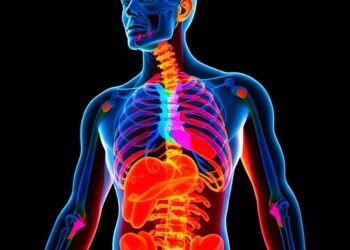COLUMBUS, Ohio – Parent size and the conditions in which actively spawning adults lived are the most influential factors affecting growth of Lake Erie walleye, a new study has found.
COLUMBUS, Ohio – Parent size and the conditions in which actively spawning adults lived are the most influential factors affecting growth of Lake Erie walleye, a new study has found.
The findings surprised the scientists, who expected recent temperatures and food availability to have the highest impact on walleye growth.
Cold winters and more sizable mothers were associated with faster growth in 3- to 5-year-old walleye offspring, the analysis showed, suggesting that warmer winters that come with climate change might lead to future generations of smaller fish.
The findings also may mean ecological research in other species should take parental experiences into account to better understand animals’ present health, researchers say.
“We really did think that the recent environment would have the strongest effects,” said lead author Zoe Almeida, who completed the work as a PhD student in evolution, ecology and organismal biology at The Ohio State University. “When you’re thinking about factors that affect growth, you think you have to account for temperature and prey. And in reality, those signals were so small themselves that they weren’t the strongest in any way. It was very surprising.”
The study was published Aug. 13 in the Journal of Animal Ecology.
The pace of growth is used in research as an indicator of overall health in many species – and is influenced not only by experiences, but also genetics. By any measure, the current status of the Lake Erie walleye population is considered quite robust, according to the 2024 status report from the Ohio Division of Wildlife (ODNR-DOW).
“The Lake Erie walleye population is doing fantastic right now,” said Almeida, now a senior research associate in natural resources and the environment at Cornell University. “But is there something going on behind the scenes we’re not noticing, or that we won’t notice until much later because we don’t realize its effects?”
In pursuit of an answer, Almeida and colleagues made use of the wealth of walleye data generated by ODNR-DOW through its longtime monitoring of the Lake Erie population.
The team analyzed five factors that can affect growth: recent environmental conditions, such as food supply and temperature; previous year traits, including growth; population density that could indicate the extent of competition early in life; early-life body size; and parental conditions and environmental experiences.
The analysis was done on annual cohorts using data of walleye populations that were 3 to 5 years old in each year between 1982 and 2015, an age when they’re reaching maturity, but still growing rapidly. ODNR-DOW data also indicated the proportion of walleye that were spawning each year. Researchers explored relationships between these factors and cohort growth using statistical modeling.
“We parsed all that out and what was affecting the growth on a cohort level was really what happened to the parents,” Almeida said. “The size composition and winters they experienced determined whether or not the cohort was faster growing or slower growing than typical in the year before in individuals 3 to 5 years old.”
Meanwhile, no big impact on growth could be traced to the expected factors: recent prey, temperature and fishing pressure (anglers are the walleye’s main predator). This is not to say they had no effect – their effects were just not the most influential, she said.
The findings have implications for wildlife management and ecology research.
“It helps us set our expectations and understand the mechanisms behind things going on out there. When managers are thinking about what this population is going to look like in three to five years, they ideally will acknowledge the fact that what happened in the past is affecting them and keep that in mind when they’re making their management decisions,” Almeida said.
“And I do think that it has implications for other animals because what happens in early life or what happened to parents might be more influential than what is happening currently in their environment. And we’re not accounting for that.”
This work was supported by the National Science Foundation, a Distinguished University Fellowship from Ohio State, the American Fisheries Society, the International Association of Great Lakes Research, and the Federal Aid in Sport Fish Restoration Program administered jointly by the U.S. Fish and Wildlife Service and ODNR Division of Wildlife.
Co-authors were Stuart Ludsin and Elizabeth Marschall of Ohio State, and Matthew Faust of ODNR.
#
Contact: Zoe Almeida, zoealmeida@cornell.edu
Written by Emily Caldwell, Caldwell.151@osu.edu; 614-292-8152
Journal
Journal of Animal Ecology
Article Title
Lingering legacies: Past growth and parental experience influence somatic growth in a fish population
Article Publication Date
13-Aug-2024




